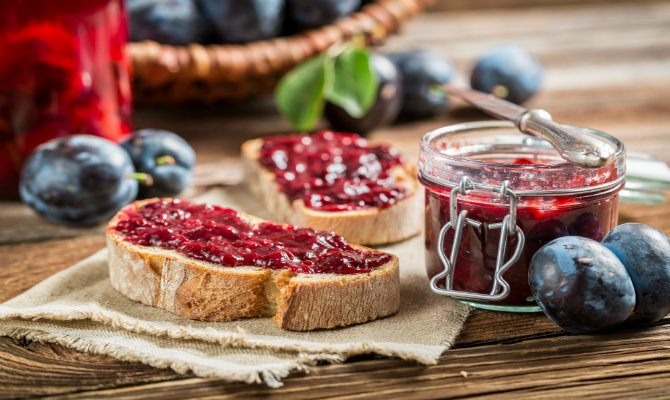What's The Difference Between Jam, Jelly, And Preserves?
You spread them on toast, you love the sweet fruity flavors that they come in, but have you ever really stopped to consider what makes them different from one another? Preserved fruit is a tasty byproduct of necessity. Long ago, when seasonality wasn't a trend so much as a fact of life, preserved fruit was the only way to keep eating sweet strawberries and apricots all through winter. Today, we delight in jam, jelly, and preserves' sweet addition to peanut butter sandwiches and our morning scone.
If you looked on the back of the three jars, you would realize they are all made with basically the same ingredients: fruit, sugar, pectin, and citric acid. When making your own jam, jelly, or preserve it is important to understand the role each ingredient plays in the canning process.
Fruit: Obviously the star of this food attraction, whatever fruit you choose should be picked when it is ripe or just under-ripe for the best-tasting preserves.
Sugar: Besides making your favorite preserve sweet, sugar works as a preservative, drawing out the moisture. The higher the sugar content, the longer the shelf life of your favorite preserve. At-home canners generally use regular table sugar, but more commercial brands will use the cheaper corn syrup. Brown sugar and honey are also occasionally used to sweeten preserves.
Pectin: The fruit-based binder is typically made from apples and is a naturally occurring binding agent. Pectin is part of a duo that forms the gel that binds the fruit and juices together. In order for the pectin to activate, you need one very crucial ingredient: acid. Whether you choose citric acid, vinegar, or some other edible acid, the acid brings everything together.
Now that the ingredients are understood, we can get into the real meat of the discussion: What actually is the difference between these three? Well, it is fairly simple. Many people use the term preserves to encompass all preserved fruits, but it's more accurate to say that it's the preservation method that preserves fruit in its most whole state. Typically, the fruit is halved or quartered in some sort of syrup or pectin jelly.
Jam is made with the whole fruit as well, but it is diced and cooked down until it no longer resembles its original shape. Finally, jelly is made entirely from fruit juices. It is what you find in your Smucker's jar. Jelly has a glossy, clear appearance without any visible fruit seeds or skins. It usually has the highest sugar content, giving it the longest shelf life.
If you want to try your hand at preserving, check out these six expert tips for making your own jams and jellies.
Click here for jam and jelly making tips.
Angela Carlos is the Cook Editor at The Daily Meal. Find her on Twitter and tweet @angelaccarlos.
